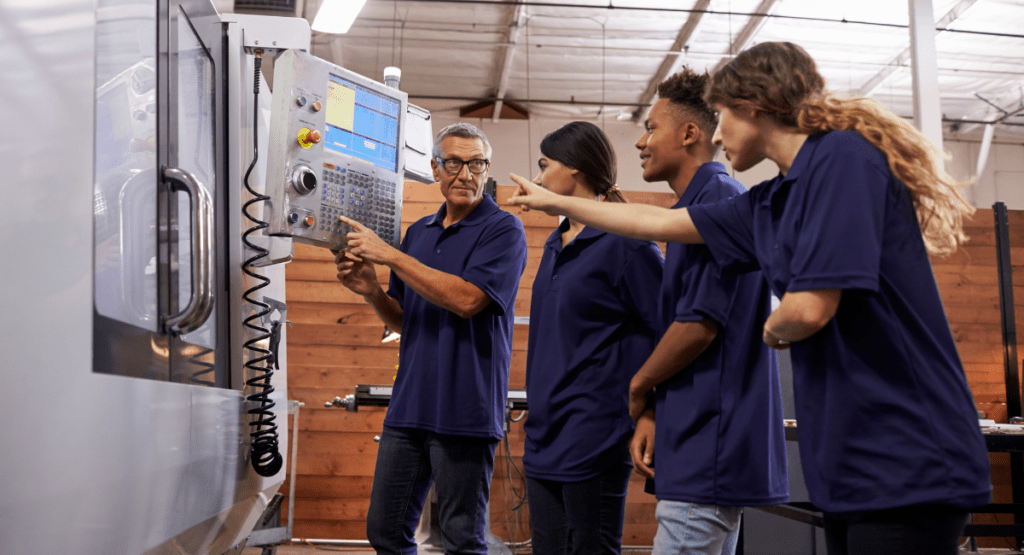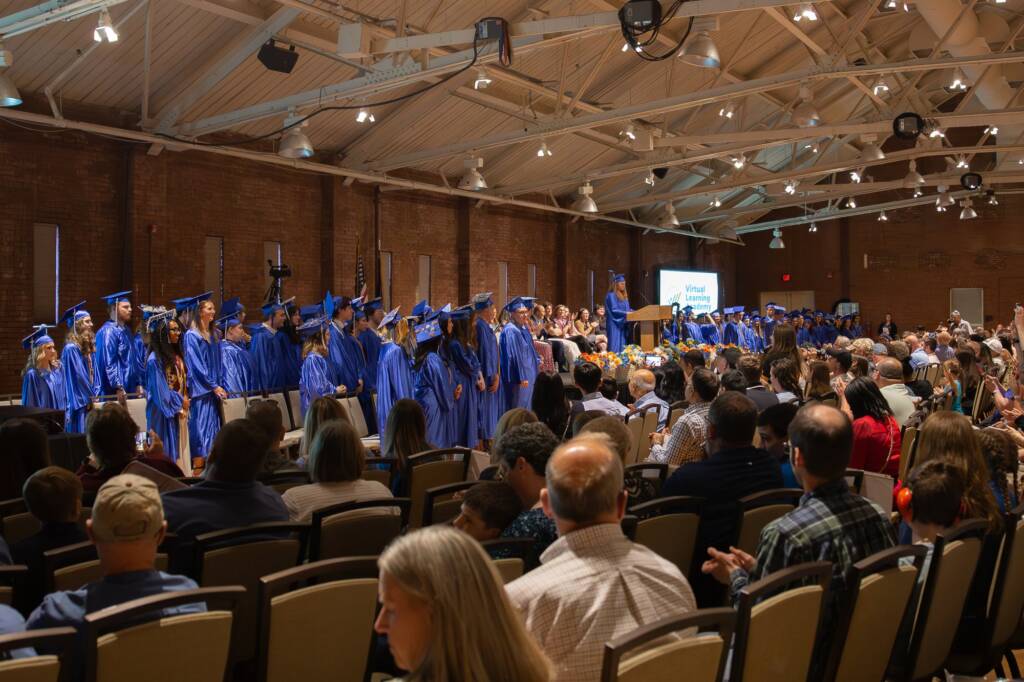Customized learning platforms mean lots of options, all of which enable students to earn credit anytime, anywhere.
Of the four pathways–courses, projects, college, and experiences–experiences give students the most autonomy in designing how they master competencies and earn credit.
The experiences pathway gives students the option of participating in job shadows, internships, travel, work, independent learning, entrepreneurship, and service-learning projects. They can earn part of a credit, or apply your experience to a whole credit.
Typically, earning a few competencies through an experience will take about 4-6 weeks, and you’ll receive credit. For longer, more involved experiences, students can earn an entire credit, which can take anywhere from a few months to a school year.
The beauty of it? Students help design their experience with a certified instructor who helps create a plan for mastering competencies. Students earn credit by learning and meeting a group of pre-existing competencies in a subject. Bottom line: students get to decide how to meet the competencies required for credit, which also means they get to decide what they do for their experience.
How do experiences work?
Once a student decides that they want to earn credit for an experience, they need to enroll in an experience and then begin the three-step process of design, learn, and assessment.
In the design phase, students refine their ideas with an instructor, who’ll help you connect the activities and experiences to valid academic competencies that students can apply towards credit.
During the “learn” phase, students are actively involved in their experience, documenting their journey, and completing previously agreed-upon assignments. Students work on their experience regularly, which may mean every week or a few days over an extended period of time. They also meet weekly with your instructor to review your progress, submit assignments, and ask questions. Students may also opt to meet with experts in the fields, mentors, or supervisors at a worksite to gain clarification and expand their learning.
During the assessment phase, students demonstrate what they’ve learned and show mastery of competencies based on a discussion-based assessment (DBA) with the instructor. The learn and assess phases will occur as needed throughout the experience until the student has achieved and demonstrated competency.
For that student traveling abroad with their family, staying at a homestay, and learning another language, an experience may be just the ticket.
The key is that experiences aren’t retroactive. Students have to register for them and design them before asking for credit.
Meet Emily and Connor
Recent graduates and former full-time VLACS students Emily Kayser and Connor McGonagle have nothing but good things to say about their VLACS experiences.
For Emily, a pre-professional ballet dancer, the experience of shadowing a professional ballet dancer and earning credit for it gave her insight into her chosen career that she wouldn’t have otherwise had.
With a demanding training schedule, Emily opted to attend VLACS full-time starting her junior year of high school. She says, “VLACS really made me able to take my academics with me wherever I went.”
She wanted to shadow a professional ballet dancer not just to “see the parts [she] already knew,” but to ” learn more about the aspects I didn’t know about.” Emily learned in-depth about the “marketing, financing, and kind of the community outreach aspects of the career.”
She says, “I experience a lot of these elements every day, but I’ve never researched them or talked to office staff.”
The experience allowed her to do that. She completed the experience over a few months, checking in with her instructor regularly, and completed all of her work as required. As compared to other VLACS pathways, Emily says that the experience gave her tremendous insight into her chosen career.
She says, “The experience was more productive for me I think than some of the other courses. I think I just learn better in the way that was formatted, because I learn visually and I’m a creative thinker, I like to be able to talk to people. I was able to talk to people and see it.” She adds, “I was able to get hands-on with it.”
When she compares the experience to some of the other VLACS pathways, she notes some similarities, like the welcome call and the completion call. She says that she met with her instructor as needed, and completed 8 different competencies, and a big project for each competency.
Emily explains that she liked creating her own project to meet the competencies.
As an experience pathway student, Emily had the benefit of not only working with her VLACS instructor but also a site-based coach who helped her along the way.
One thing she loves? As with most other VLACS pathways, she could work at the pace she wanted. She says, “This was my last credit on VLACS, so I finished it in 3 months.”
Connor is another recent VLACS graduate who also attended full-time. He says he “loved the freedom and focus” with VLACS.
Connor had a similar experience with the experience pathway but started from a different perspective. Unlike Emily, he wanted to learn about video editing, a subject on which he had limited prior knowledge.
Although the flow of the experiences worked similarly, and he completed eight competencies, he met with his instructor weekly to review his work, and to plan for his job shadow.
He worked with a video editing company and learned the back-end of video production. He liked having the flexibility to design his own experience–and liked having the support of an instructor to guide him through the process.
Connor says, “Because of the creative freedom deciding on assignments, I was able to make my own video and edit it, like a video essay. That was very fun and I’m proud of the video I was able to create. It took a while to make.”
He notes, “The freedom behind the assignments made them more interesting.”
His biggest takeaway? “I guess just the fact that there is so much detail in all of these various careers that are available. Having this experience class dedicated to just one really opens up your eyes and makes you realize how big some careers are. Being able to dive behind the scenes is interesting when learning about a career you don’t know too much about.”
Connor plans to attend Liberty University in Virginia, where he’ll study computer science and hopefully pursue “something on the creative side” related to graphic design and art.
Both Emily and Connor recommend the VLACS Experience pathway for students who are motivated to work independently, and for those who want some autonomy in designing their work.
Anytime, Anywhere
Emily and Connor embraced the flexibility of the experience pathway by earning competencies that they applied to high school credit–and gained valuable insights and skills along the way.
They paced themselves in ways that worked for them and chose when, where, and how to develop their experiences with the help of an instructor.
For Emily, it was more about delving deeper into a field she already understood. For Connor, it was about exploring something entirely new. For both of them, it was about pursuing an interest and a passion on their own terms.
Come learn with us and enroll today!
About the students
Emily Kayser is a pre-professional ballet dancer who has used VLACS to further her ballet training. While home and family still reside in NH, her high school journey with VLACS has allowed her to study at ballet schools and programs across the U.S. A 2018 VLACS graduate, she’s off to Seattle and Miami to continue her pursuits and passion for ballet.
Connor McGonagle, a high school graduate, has his eyes set on Liberty University to pursue his interests in computer science and various arts. Part of his own time is also spent learning about movies, animation, digital arts, French, and whatever other topics he finds intriguing. Photo not available.



